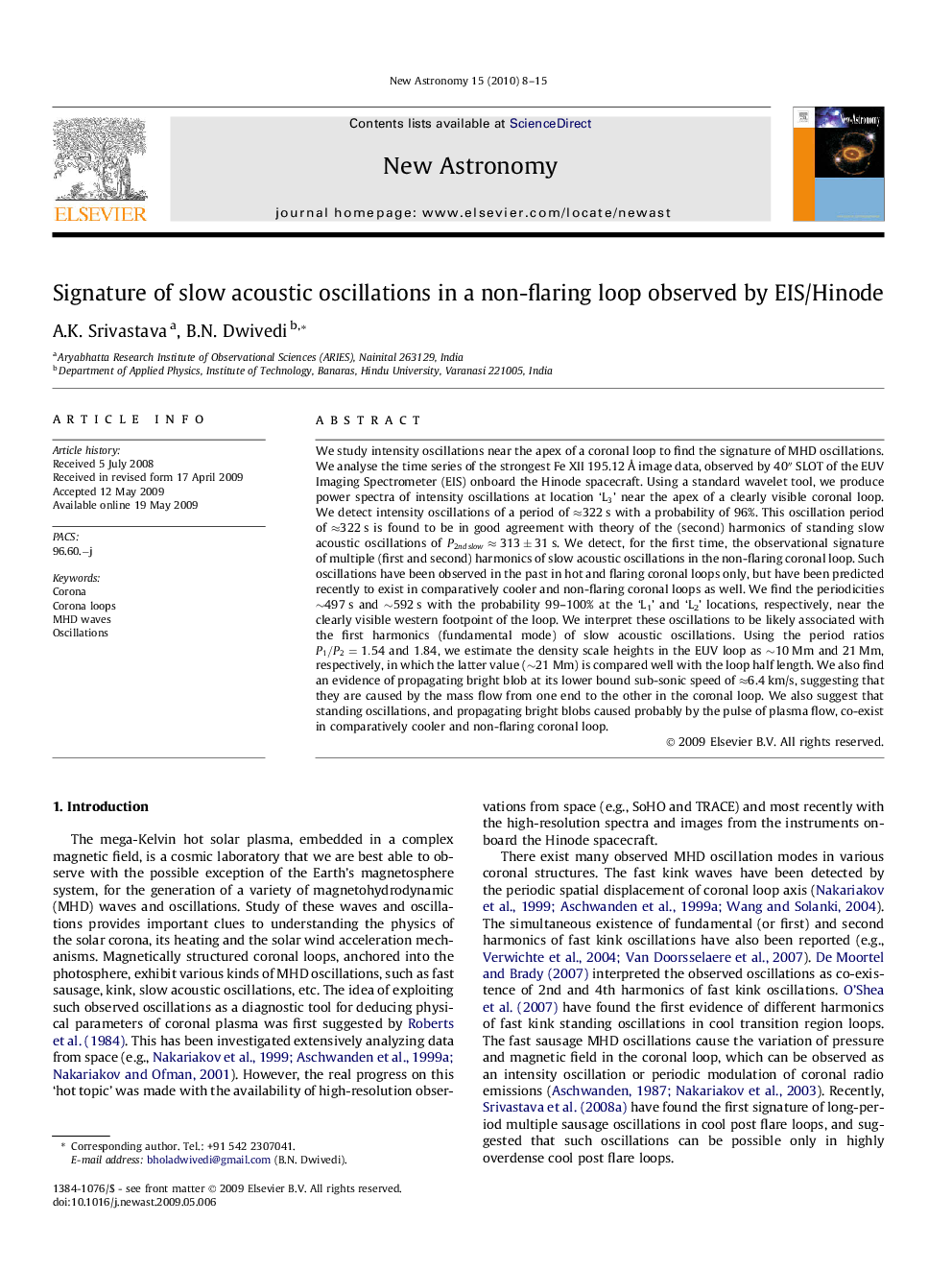| کد مقاله | کد نشریه | سال انتشار | مقاله انگلیسی | نسخه تمام متن |
|---|---|---|---|---|
| 1779476 | 1022003 | 2010 | 8 صفحه PDF | دانلود رایگان |
عنوان انگلیسی مقاله ISI
Signature of slow acoustic oscillations in a non-flaring loop observed by EIS/Hinode
دانلود مقاله + سفارش ترجمه
دانلود مقاله ISI انگلیسی
رایگان برای ایرانیان
موضوعات مرتبط
مهندسی و علوم پایه
فیزیک و نجوم
نجوم و فیزیک نجومی
پیش نمایش صفحه اول مقاله

چکیده انگلیسی
We study intensity oscillations near the apex of a coronal loop to find the signature of MHD oscillations. We analyse the time series of the strongest Fe XII 195.12Â Ã
image data, observed by 40â³ SLOT of the EUV Imaging Spectrometer (EIS) onboard the Hinode spacecraft. Using a standard wavelet tool, we produce power spectra of intensity oscillations at location 'L3' near the apex of a clearly visible coronal loop. We detect intensity oscillations of a period of â322 s with a probability of 96%. This oscillation period of â322 s is found to be in good agreement with theory of the (second) harmonics of standing slow acoustic oscillations of P2ndslowâ313±31s. We detect, for the first time, the observational signature of multiple (first and second) harmonics of slow acoustic oscillations in the non-flaring coronal loop. Such oscillations have been observed in the past in hot and flaring coronal loops only, but have been predicted recently to exist in comparatively cooler and non-flaring coronal loops as well. We find the periodicities â¼497 s and â¼592 s with the probability 99-100% at the 'L1' and 'L2' locations, respectively, near the clearly visible western footpoint of the loop. We interpret these oscillations to be likely associated with the first harmonics (fundamental mode) of slow acoustic oscillations. Using the period ratios P1/P2=1.54and1.84, we estimate the density scale heights in the EUV loop as â¼10 Mm and 21 Mm, respectively, in which the latter value (â¼21 Mm) is compared well with the loop half length. We also find an evidence of propagating bright blob at its lower bound sub-sonic speed of â6.4 km/s, suggesting that they are caused by the mass flow from one end to the other in the coronal loop. We also suggest that standing oscillations, and propagating bright blobs caused probably by the pulse of plasma flow, co-exist in comparatively cooler and non-flaring coronal loop.
ناشر
Database: Elsevier - ScienceDirect (ساینس دایرکت)
Journal: New Astronomy - Volume 15, Issue 1, January 2010, Pages 8-15
Journal: New Astronomy - Volume 15, Issue 1, January 2010, Pages 8-15
نویسندگان
A.K. Srivastava, B.N. Dwivedi,